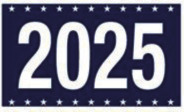Fall color in Meridian
By By Gail Barton / horticulture columnist
Nov. 9, 2003
I predict that we are going to have an especially colorful fall this year.
It would make for interesting reading if I led you to believe that I was basing my prediction on a quick glimpse into a crystal ball. The truth, however, is that my prediction is based on nothing more than the weather. Fall color will usually be more brilliant if weather is cool, dry and sunny like New England autumn weather.
The Southern United States usually has hot dry weather or fall rains resulting in drab foliage that turns soggy on the tree and sluffs off onto the ground. This fall, Meridian weather has been unseasonably cool, dry and sunny, so I'm hoping for a pallet of crimson, gold, and purple foliage.
Leaves change color in fall because the shorter days trigger a hormonal upset within the cells. The chemical changes cause a weakened layer to develop in the leaf stalk so that the leaf can detach from the tree and fall.
Before leaves fall the plant recaptures nutrients from the leaf cells by breaking down complex cellular materials such as chlorophyll. Chlorophyll is the green pigment that colors leaves during the growing season. When the chlorophyll is gone, other yellow, orange, purple, and red pigments become visible. The formation of these pigments is stimulated in cool sunny dry weather.
Hopefully my prediction will come true and we will have an especially colorful fall. However, next year or the year after, we'll probably have the usual sweltering September days. There are a few trees that consistently have good fall color in the south in spite of the weather. You can ensure some fall color even in a bad year by planting or preserving some of these plants.
Black gum is one of the earliest trees to turn red. You can identify black gum now by its bright red leaves in the wooded areas around Meridian. You're not likely to find black gum in any nursery in Meridian. You may, however, have a black gum volunteer worth saving in your landscape.
The best and most dependable gold fall color around Meridian comes from hickory. Like the black gum, hickory should be admired on the roadsides or identified and preserved since it is rarely available for sale. If you're nursery-shopping for a golden yellow beauty, look for a ginkgo.
Ginkgoes have beautiful fan-shaped leaves that turn a striking buttery yellow late in the autumn. The down-side of ginkgo is that it has a very slow rate of growth. If you're impatient, you may want to take a Sunday drive on Poplar Springs Drive in a couple of weeks. You can enjoy some of the lovely ginkgoes there instead of waiting for your own to grow.
The most brilliant purple comes from a tree that many consider to be "trash tree" the sweetgum. Sweetgum color can range from yellow to orange or purple. The color transformation may be enough to make you forget about the litter problems from sweetgum balls or fruit.
Sugar maple and sassafras are the best candidates for orange fall color. There are some beautiful specimens of both around Meridian. However, you won't find sassafras in the garden centers. If you do find sugar maple it may not be well adapted to our extreme heat.
I think the most dependable maples for color in our area are red maple and Japanese maple. Red maple is a shade tree with red, orange or yellow fall color. Japanese maple is a small tree with intense red fall color. Both these maples can be found in local garden centers.
While you're shopping, consider buying a flowering dogwood or crape myrtle. Both have beautiful flowers in other seasons and both can have striking red, orange or yellow fall color.
Visit your garden center now and pick the crape myrtle or dogwood with the loudest gaudiest leaves. You'll enjoy the tinted leaves for years to come. Think of the flowers as a bonus.
Gail Barton is coordinator of the Horticulture Technology Program at Meridian Community College.








